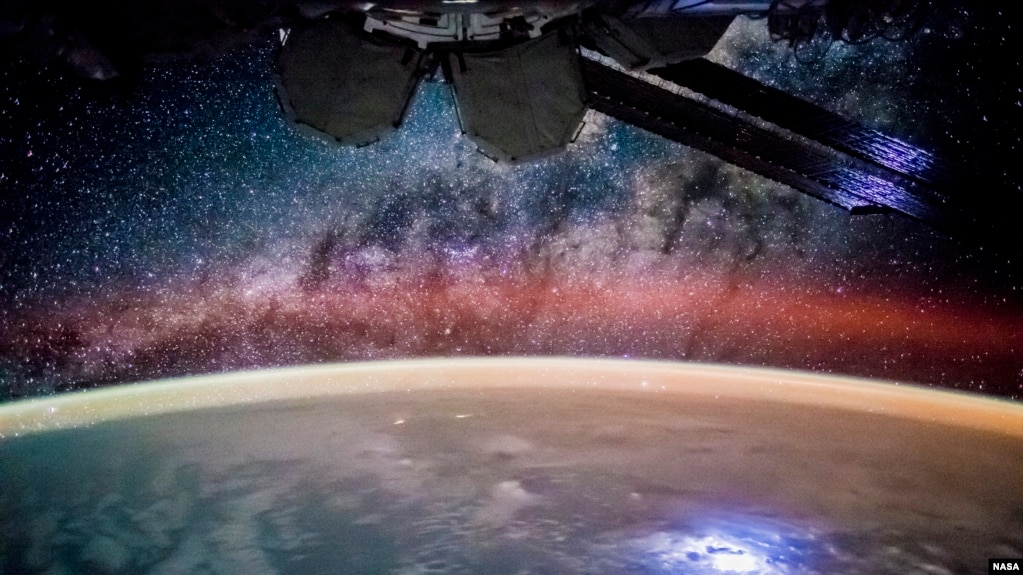dilloduck
Diamond Member
Galactic Center of Milky Way Rises over Texas Star Party on Vimeo
mighty cool video of the Milky Way
mighty cool video of the Milky Way
Follow along with the video below to see how to install our site as a web app on your home screen.
Note: This feature may not be available in some browsers.

Astronomers say they hope to measure additional points around the galaxy to produce a map - the first of its kind - over the next decade. Alberto Sanna of Germany's Max-Planck Institute for Radio Astronomy said in a news release that using the Very Long Baseline Array, which is remotely operated near Socorro, allows astronomers to “accurately map the whole extent of our galaxy,” the Albuquerque Journal reported.

An astronaut took this broad, short-lens photograph of Earth’s night lights and Milky Way while looking out over the remote reaches of the central equatorial Pacific Ocean.
Mark Reid, a senior radio astronomer at the Harvard-Smithsonian Center for Astrophysics who worked on the project, said they hope to create the map by measuring additional points around the galaxy. So far, they have measured around 200. Reid said 100 or so observations must be done from the Earth's southern hemisphere, so he will be traveling to Australia in the future to use telescopes there.
Although the data for the 66,000 light-year measurement was collected in 2014 and 2015, the team has spent the time since then analyzing it, Reid said. “It's not like you get a Hubble (Space Telescope) space image,” he said. While there are artistic renderings of what the Milky Way probably looks like, this effort will yield a highly accurate image, Reid said.
Astronomers Measure Milky Way with Radio Waves
Professor Hawking’s "Properties of Expanding Universes" has been the most requested item in the university’s library. To meet the demand, and with Hawking’s encouragement, Cambridge made it available on line.

Stephen Hawking receives the Honorary Freedom of the City of London. Cambridge University has put Hawking's doctoral thesis online, Oct. 23, 2017. "Properties of Expanding Universes" explores ideas about the origins of the universe that have resonated through the scientist’s career.
About 60,000 people sought to access it, causing the system to periodically shut down throughout the day Monday. Hawking is the world's best-known physicist and expert on the cosmos. His landmark 1988 work "A Brief History of Time" has sold more than 10 million copies.
With his thesis now available for anyone to read, Hawking said he hopes to “inspire people around the world to look up at the stars and not down at their feet, to wonder about our place in the universe and to try and make sense of the cosmos.”
Demand for Hawking Thesis Shuts Down Cambridge University Website